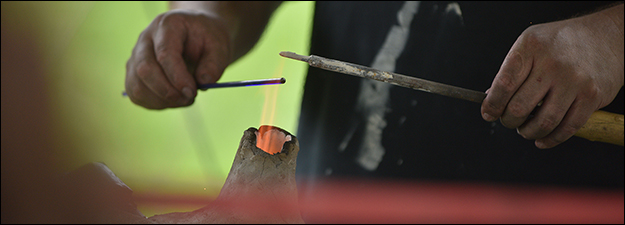Using the Collation Modeler (A Workshop)
Sponsoring Organization(s)
Schoenberg Institute for Manuscript Studies
Organizer Name
Dorothy Carr Porter
Organizer Affiliation
Univ. of Pennsylvania
Presider Name
Dorothy Carr Porter
Start Date
12-5-2016 3:30 PM
Session Location
Waldo Library Classroom A
Description
Led by Dot Porter from the Schoenberg Institute for Manuscript Studies, this workshop will walk attendees through the process of creating a physical collation model, and processing that model in various ways. The Collation Modeler is an online form through which scholars can build a virtual model of a manuscript's collation - indicating numbers of quires and the constitution of those quires (the alpha version of the Collation Modeler is at https://protected-island-3361.herokuapp.com, and an updated version will be posted prior to the workshop). Once the model is generated, it can be processed in a variety of ways, including to generate collation formulae, or to create a virtual representation of the manuscript (see examples posted at http://dorpdev.library.upenn.edu/collation/). The workshop will be of interest to any scholar whose work is in any way connected to the physical construction of a manuscript.
Using the Collation Modeler (A Workshop)
Waldo Library Classroom A
Led by Dot Porter from the Schoenberg Institute for Manuscript Studies, this workshop will walk attendees through the process of creating a physical collation model, and processing that model in various ways. The Collation Modeler is an online form through which scholars can build a virtual model of a manuscript's collation - indicating numbers of quires and the constitution of those quires (the alpha version of the Collation Modeler is at https://protected-island-3361.herokuapp.com, and an updated version will be posted prior to the workshop). Once the model is generated, it can be processed in a variety of ways, including to generate collation formulae, or to create a virtual representation of the manuscript (see examples posted at http://dorpdev.library.upenn.edu/collation/). The workshop will be of interest to any scholar whose work is in any way connected to the physical construction of a manuscript.

